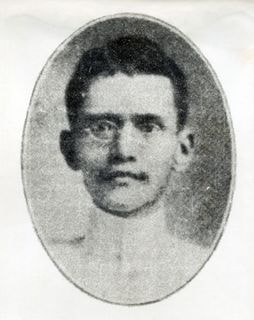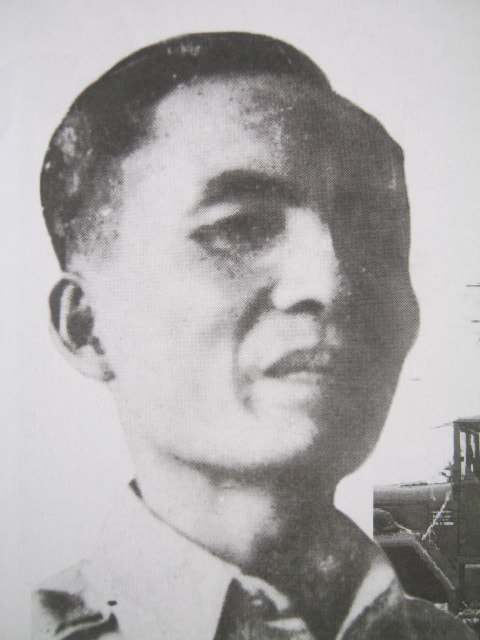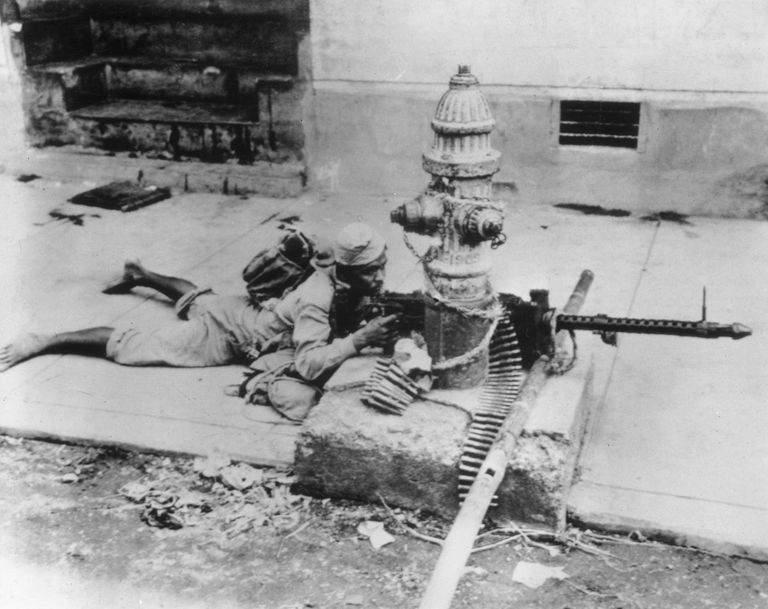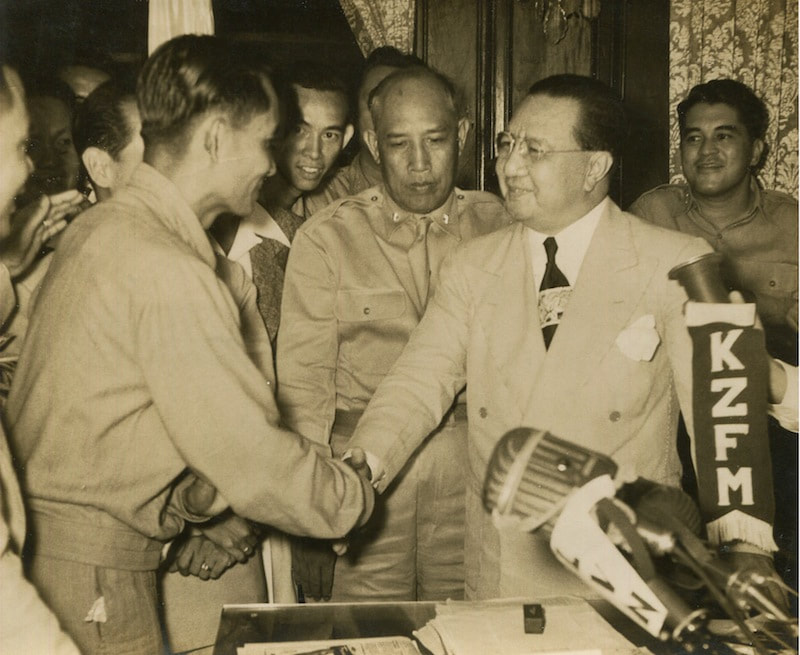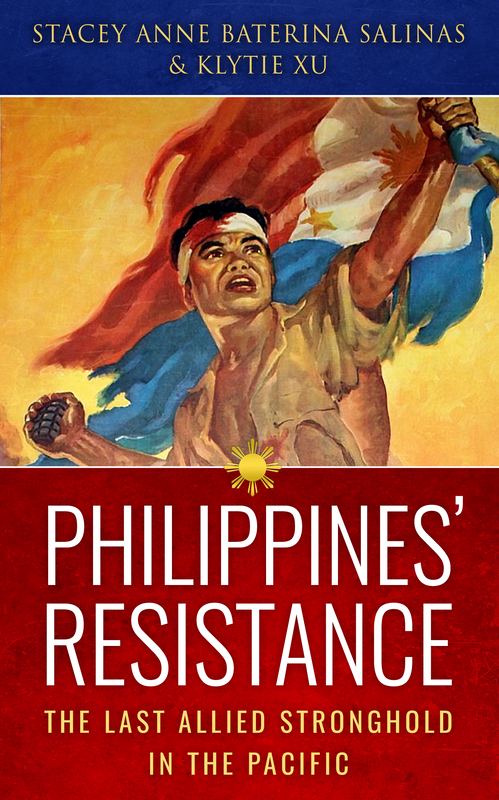- Home
- Stories
-
Internship
- Summer 2024 Internship
- Summer 2023 Internship
- Fall 2022 Internship
- Summer 2022 Internship
- Summer 2021 Internship
- Fall 2020- Spring 2021 Internship
- Summer 2020 Internship
- Fall 2019 Internship
- Summer 2019 Internship >
- School Year 2018-2019 Internship
- Summer 2018 Internship >
- Fall 2017 Internship
- Summer 2017 Internship >
- Books
- Archives
-
Resource Page
-
Supplementary Research Guides
>
- Unit 731 - Guide >
-
Philippines' Resistance - Guide
>
- Philippines World War II Timeline
- The Japanese Invasion & Conquest of the Philippines
- Bataan Death March
- Formation of Underground Philippines Resistance
- Supplies of the Guerrilla Fighters
- The Hukbalahap
- Hunter's ROTC
- Marking's Guerrillas
- United States Army Forces in the Philippines of Northern Luzon (USAFIP-NL)
- The Aetas
- Chinese and Filipino-Chinese Nationalist Guerrilla Units
- The Female Faces of the Philippine Guerrillas
- Rising Sun Flag - Guide >
- Pinay Guerrilleras - Guide >
- Fall of Singapore - Guide >
- Three Years and Eight Months - Guide >
- Siamese Sovereignty - Guide >
- The Khabarovsk War Crimes Trial - Guide >
- Unit 731 Cover-up : The Operation Paperclip of the East - Guide >
- Marutas of Unit 731 - Guide >
- Prince Konoe Memoir - Guide >
- Competing Empires in Burma - Guide >
- Battle of Shanghai - Guide >
- Ishi Shiro - Guide >
- Taiwan The Israel of the East - Guide >
- Seeking Justice for Biological Warfare Victims of Unit 731 - Guide >
- Rice and Revolution - Guide >
- Clash of Empires - Guide >
-
Hunger for Power and Self-SufficiencyI - Guide
>
- The Influence of War Rations on Post-War Culinary Transformations
- How World War II Complicated Food Scarcity and Invention
- American Military Innovations
- Government-Sponsored Food Inventions in Europe during World War II
- Feeding the Army: The Adaptation of Japanese Military Cuisine and Its Impact on the Philippines
- Mixed Dishes: Culinary Innovations Driven by Necessity and Food Scarcity
-
Denial A Quick Look of History of Comfort Women and Present Days’ Complication - Guide
>
- The Comfort Women System and the Fight for Recognition
- The Role of Activism and International Pressure
- The Controversy over Japanese History Textbooks
- The Sonyŏsang Statue and the Symbolism of Public Memorials
- Activism and Support from Japanese Citizens
- The Future of Comfort Women Memorials and Education
- Echoes of Empire: The Power of Japanese Propaganda - Guide >
- Lesson Plans >
-
Supplementary Research Guides
>
Motivation of the the Hukbalahaps (Huks)
|
Crisanto Evangelista
|
The name Hukbalahap, translates to "the people's army against the Japanese". The group was founded as a political interest group for the communist party, but it will play an important role in Philippines' resistance against the Imperial Japanese force.
The founders and party members of both the Socialist and Philippine Communist Party throughout the 1930s, prior to the Japanese occupation, served as active nationalists and revolutionaries who sought an independent communist Philippine state. The leader of the Philippines first official communist organization, the Worker’s Party, was Crisanto Evangelista. It wouldn’t be until after the Japanese capture and executions of Evangelista and his head deputy, Abad Santos, that Evangelista’s communist and socialist guerrillas would come to call themselves officially the Hukbalahap in 1942. Evangelista’s political goals included creating a financially independent Philippines free from American governance and capitalism, while most importantly, liberating the Filipino peasant and working classes. |
The Makeup of Hukbalahap
As one would imagine from a typical communist party, the main participants of Hukbalahap were peasants, since Evangelista's political ideology was to liberate the peasantry and farming families, which struck a personal chord with the peasants.
The Huks' main center of communication was on the island of Luzon in the swamp and dense jungle regions near Mount Arayat. In the beginning of the war, the Huks were very low on resources in regards to men, trained soldiers, weaponry, foodstuffs, and basic necessities like clothing. Due to the lack of resources, Evangelista came up with a strategy to do quick surprise attacks on the Imperial Japanese soldiers since the Huks were local and knew the jungles well.
The Huks' main center of communication was on the island of Luzon in the swamp and dense jungle regions near Mount Arayat. In the beginning of the war, the Huks were very low on resources in regards to men, trained soldiers, weaponry, foodstuffs, and basic necessities like clothing. Due to the lack of resources, Evangelista came up with a strategy to do quick surprise attacks on the Imperial Japanese soldiers since the Huks were local and knew the jungles well.
Collaboration with Allied Forces
|
Luis Taruc
|
By December 10, 1941, the Huks finally agreed to officially align themselves with the Allied forces and the Philippines' Commonwealth headed by Quezon. Evangelista’s forces were successful not only in their raids across Luzon’s northern landscape but also were able to provide the underground resistance with the much needed ammunitions and promote a successful image of Filipino resistance to the Japanese forces winning the support of some Filipino communities of Luzon. Evangelista and his guerrillas’ successful raids helped to prompt more Filipino civilians and peasant farmers to join the guerrilla movement throughout the war.
With the Japanese execution of Evangelista in 1942, guerilla socialist leader Luis Taruc became the Huk Commander. Under his leadership, the Hukbalahaps would continue to compete, absorb, fight, or collaborate with other American and Filipino guerrillas. But for a number of their missions where the Huks would collaborate with Allied forces, such as the liberation of the POW and civilian camps throughout Luzon (i.e. the Raid of Cabanatuan and the Raid of Los Banos), Huk units would offer their soldiers as reserves to the U.S. 11th Airborne Division. |
Hukbalahaps Images
Related Book
Philippines' Resistance:
|
|
Pacific Atrocities Education
730 Commercial Street San Francisco, CA 94108 415-988-9889 |
Copyright © 2021 Pacific Atrocities Education.
We are a registered 501 (c)(3) charity. |
- Home
- Stories
-
Internship
- Summer 2024 Internship
- Summer 2023 Internship
- Fall 2022 Internship
- Summer 2022 Internship
- Summer 2021 Internship
- Fall 2020- Spring 2021 Internship
- Summer 2020 Internship
- Fall 2019 Internship
- Summer 2019 Internship >
- School Year 2018-2019 Internship
- Summer 2018 Internship >
- Fall 2017 Internship
- Summer 2017 Internship >
- Books
- Archives
-
Resource Page
-
Supplementary Research Guides
>
- Unit 731 - Guide >
-
Philippines' Resistance - Guide
>
- Philippines World War II Timeline
- The Japanese Invasion & Conquest of the Philippines
- Bataan Death March
- Formation of Underground Philippines Resistance
- Supplies of the Guerrilla Fighters
- The Hukbalahap
- Hunter's ROTC
- Marking's Guerrillas
- United States Army Forces in the Philippines of Northern Luzon (USAFIP-NL)
- The Aetas
- Chinese and Filipino-Chinese Nationalist Guerrilla Units
- The Female Faces of the Philippine Guerrillas
- Rising Sun Flag - Guide >
- Pinay Guerrilleras - Guide >
- Fall of Singapore - Guide >
- Three Years and Eight Months - Guide >
- Siamese Sovereignty - Guide >
- The Khabarovsk War Crimes Trial - Guide >
- Unit 731 Cover-up : The Operation Paperclip of the East - Guide >
- Marutas of Unit 731 - Guide >
- Prince Konoe Memoir - Guide >
- Competing Empires in Burma - Guide >
- Battle of Shanghai - Guide >
- Ishi Shiro - Guide >
- Taiwan The Israel of the East - Guide >
- Seeking Justice for Biological Warfare Victims of Unit 731 - Guide >
- Rice and Revolution - Guide >
- Clash of Empires - Guide >
-
Hunger for Power and Self-SufficiencyI - Guide
>
- The Influence of War Rations on Post-War Culinary Transformations
- How World War II Complicated Food Scarcity and Invention
- American Military Innovations
- Government-Sponsored Food Inventions in Europe during World War II
- Feeding the Army: The Adaptation of Japanese Military Cuisine and Its Impact on the Philippines
- Mixed Dishes: Culinary Innovations Driven by Necessity and Food Scarcity
-
Denial A Quick Look of History of Comfort Women and Present Days’ Complication - Guide
>
- The Comfort Women System and the Fight for Recognition
- The Role of Activism and International Pressure
- The Controversy over Japanese History Textbooks
- The Sonyŏsang Statue and the Symbolism of Public Memorials
- Activism and Support from Japanese Citizens
- The Future of Comfort Women Memorials and Education
- Echoes of Empire: The Power of Japanese Propaganda - Guide >
- Lesson Plans >
-
Supplementary Research Guides
>
